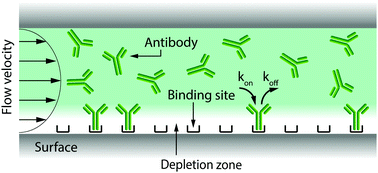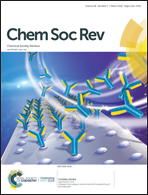Underpinning transport phenomena for the patterning of biomolecules†
Abstract
Surface-based assays are increasingly being used in biology and medicine, which in turn demand increasing quantitation and reproducibility. This translates into more stringent requirements on the patterning of biological entities on surfaces (also referred to as biopatterning). This tutorial focuses on mass transport in the context of existing and emerging biopatterning technologies. We here develop a step-by-step analysis of how analyte transport affects surface kinetics, and of the advantages and limitations this entails in major categories of patterning methods, including evaporating sessile droplets, laminar flows in microfluidics or electrochemistry. Understanding these concepts is key to obtaining the desired pattern uniformity, coverage, analyte usage or processing time, and equally applicable to surface assays. A representative technological review accompanies each section, highlighting the technical progress enabled by transport control in e.g. microcontact printing, inkjet printing, dip-pen nanolithography and microfluidic probes. We believe this tutorial will serve researchers to better understand available patterning methods/principles, optimize conditions and to help design protocols/assays. By highlighting fundamental challenges and available approaches, we wish to trigger the development of new surface patterning methods and assays.



 Please wait while we load your content...
Please wait while we load your content...